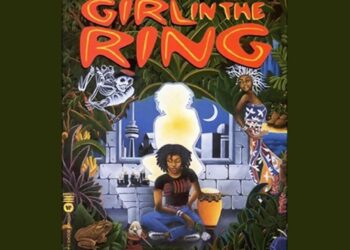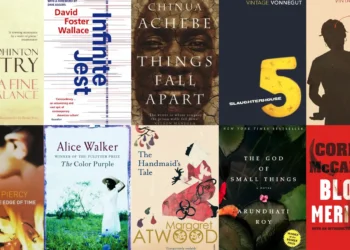50+ MCQs on Byronic Hero with Answers for UGC NET / SET Prepration
1. Who is often considered the archetype of the Byronic Hero?
a. Victor Frankenstein
b. Hamlet
c. Lord Byron
d. Elizabeth Bennet
2. In which literary work does Lord Byron’s Childe Harold first appear as a Byronic Hero?
a. “Don Juan”
b. “Manfred”
c. “Childe Harold’s Pilgrimage”
d. “She Walks in Beauty”
3. What characteristic is commonly associated with the Byronic Hero?
a. Naivety
b. Romantic idealism
c. Brooding introspection
d. Humility
4. Which of the following is a typical trait of the Byronic Hero?
a. Blind optimism
b. Eager conformity
c. Dark charisma
d. Excessive joy
5. What is the Byronic Hero’s attitude towards societal norms and conventions?
a. Adherence and conformity
b. Rebellion and defianceMCQs on Byronic
c. Indifference and apathy
d. Complacency and acceptance
6. In which century did the Byronic Hero emerge as a literary archetype?
a. 16th century
b. 18th century
c. 19th century
d. 20th century
7. Which of the following best describes the Byronic Hero’s relationship with love and romance?
a. Unwavering commitment
b. Carefree indifference
c. Tragic and intense
d. Shallow and superficial
8. What is the Byronic Hero’s view of morality and ethics?
a. Strict adherence
b. Relativistic
c. Conventional
d. Dogmatic
9. Which work by Lord Byron features a Byronic Hero who rejects established authority?
a. “The Giaour”
b. “The Prisoner of Chillon”
c. “Prometheus Unbound”
d. “Beowulf”
10. The Byronic Hero often exhibits a sense of:
a. Humility
b. Hubris
c. Apathy
d. Obedience
11. Which term is commonly used to describe the Byronic Hero’s mysterious and magnetic aura?
a. Radiant
b. Luminous
c. Enigmatic
d. Transparent
Also Read-
50+ MCQs on Anti Climax with Answers for UGC NET / SET Prepration
50+ MCQs on Soliloquy with Answers for UGC NET / SET Prepration
50+ MCQs on Satire with Answers for UGC NET / SET Prepration
12. What is the Byronic Hero’s relationship with society?
a. Harmonious integration
b. Alienation and isolation
c. Conformity and obedience
d. Egalitarianism
13. In which literary movement did the Byronic Hero gain prominence?
a. Romanticism
b. Realism
c. Classicism
d. Naturalism
14. Which of the following is a common physical characteristic of the Byronic Hero?
a. Athletic build
b. Ethereal beauty
c. Youthful appearance
d. Robust health
15. Which of the following works features a Byronic Hero seeking redemption?
a. “Wuthering Heights”
b. “The Picture of Dorian Gray”
c. “Jane Eyre”MCQs on Byronic
d. “Pride and Prejudice”
16. The Byronic Hero is often associated with:
a. Rationality
b. Irrationality
c. Objectivity
d. Optimism
17. What is the Byronic Hero’s attitude toward authority figures?
a. Reverence
b. Submission
c. Defiance
d. Apathy
18. In which way does the Byronic Hero differ from the traditional hero?
a. Loyalty
b. Humor
c. Independence
d. Altruism
19. Which of the following traits is NOT typically associated with the Byronic Hero?
a. Brooding introspection
b. Idealistic optimism
c. Emotional complexity
d. Alienation
20. The Byronic Hero often engages in:
a. Philanthropy
b. Social activism
c. Self-destructive behavior
d. Conformity
21. Which of the following best characterizes the Byronic Hero’s relationships with others?
a. Trusting and open
b. Manipulative and distant
c. Dependable and loyal
d. Cheerful and carefree
22. In “Manfred,” what is the Byronic Hero’s struggle with?
a. Romantic love
b. Supernatural forces
c. Political intrigue
d. Religious dogma
23. The Byronic Hero is often portrayed as a:
a. Outcast
b. Socialite
c. Peacemaker
d. Comedian
24. Which of the following emotions is frequently experienced by the Byronic Hero?
a. Contentment
b. ApathyMCQs on Byronic
c. Joy
d. Serenity
25. The Byronic Hero’s journey often involves:
a. Upholding tradition
b. Embracing change
c. Seeking revenge
d. Avoiding conflicts
26. In “Don Juan,” what is the Byronic Hero’s attitude towards love and relationships?
a. Idealistic and pure
b. Cynical and humorous
c. Naive and innocent
d. Sentimental and melodramatic
27. The Byronic Hero is often associated with which literary genre?
a. Comedy
b. Tragedy
c. Mystery
d. Satire
28. Which of the following is a common motif in works featuring a Byronic Hero?
a. Redemption
b. Conformity
c. Utopia
d. Naivety
29. The Byronic Hero is often depicted as a:
a. Philosopher
b. Jester
c. Saint
d. Tyrant
30. In which work does the Byronic Hero face inner conflicts related to guilt and morality?
a. “Childe Harold’s Pilgrimage”
b. “The Giaour”
c. “The Rime of the Ancient Mariner”
d. “Ivanhoe”
31. The Byronic Hero is commonly associated with which form of art?
a. Opera
b. Sculpture
c. Comedy
d. Documentary
32. In “Cain,” the Byronic Hero grapples with questions related to:
a. The afterlife
b. Creation and destruction
c. Romantic love
d. Social justice
33. The Byronic Hero often rejects societal norms in favor of:
a. Tradition
b. Individualism
c. Collectivism
d. Obedience
34. Which of the following works features a Byronic Hero haunted by a dark past?
a. “The Raven”
b. “The Hunchback of Notre-Dame”
c. “Paradise Lost”
d. “The Scarlet Letter”MCQs on Byronic
35. The Byronic Hero’s demeanor is often described as:
a. Cheerful
b. Melancholic
c. Playful
d. Apathetic
36. In “She Walks in Beauty,” Lord Byron’s speaker admires the woman’s:
a. Wit
b. Physical beauty
c. Wealth
d. Modesty
37. The Byronic Hero is often depicted as a:
a. Martyr
b. Revolutionary
c. Conformist
d. Traditionalist
38. In “Prometheus Unbound,” the Byronic Hero challenges:
a. Nature
b. God
c. Love
d. Friendship
39. What role does the Byronic Hero play in “Wuthering Heights”?
a. Romantic protagonist
b. Villainous antagonist
c. Comic reliefMCQs on Byronic
d. Wise mentor
40. The Byronic Hero’s relationship with death is often characterized by:
a. Fear
b. AcceptanceMCQs on Byronic
c. Denial
d. Joy
41. In “The Corsair,” the Byronic Hero is portrayed as a:
a. Sailor
b. Pirate
c. Scholar
d. FarmerMCQs on Byronic MCQs on Byronic
42. The Byronic Hero is often associated with which type of setting?
a. Urban
b. Rural
c. Suburban
d. Extraterrestrial
43. In “The Giaour,” the Byronic Hero’s actions are motivated by:
a. Greed
b. Revenge
c. Patriotism
d. Ambition
44. The Byronic Hero’s disdain for societal norms is often linked to:
a. Traumatic experiences
b. Utopian ideals
c. Religious beliefs
d. Political affiliations
45. Which of the following is a common fate for the Byronic Hero?
a. Triumph and success
b. Happy marriage
c. Tragic downfall
d. Ascension to power
46. The Byronic Hero often engages in self-destructive behavior as a result of:
a. Guilt and remorse
b. Joy and happiness
c. Contentment and peace
d. Acceptance and forgiveness
47. In “Childe Harold’s Pilgrimage,” the Byronic Hero seeks solace in:
a. Nature
b. Society
c. Religion
d. Technology
48. The Byronic Hero’s attitude towards love is often characterized by:
a. Devotion and loyalty
b. Cynicism and skepticism
c. Indifference and apathy
d. Idealism and purity
49. In which work does the Byronic Hero face a moral dilemma involving his own desires?
a. “The Rime of the Ancient Mariner”
b. “Moby-Dick”
c. “Frankenstein”
d. “The Fall of the House of Usher”
50. The Byronic Hero is often portrayed as a:
a. Mentor
b. Outlaw
c. Fool
d. Conformist
Answer
1. c. Lord Byron
2. c. “Childe Harold’s Pilgrimage”
3. c. Brooding introspection
4. c. Dark charisma
5. b. Rebellion and defiance
6. c. 19th century
7. c. Tragic and intense
8. b. Relativistic
9. a. “The Giaour”
10. b. HubrisMCQs on Byronic
11. c. Enigmatic
12. b. Alienation and isolation
13. a. RomanticismMCQs on Byronic
14. b. Ethereal beauty
15. b. “The Picture of Dorian Gray”
16. b. Irrationality
17. c. Defiance
18. c. Independence
19. b. Idealistic optimism
20. c. Self-destructive behavior
21. b. Manipulative and distant
22. b. Supernatural forces
23. a. Outcast
24. b. ApathyMCQs on Byronic
25. c. Seeking revenge
26. b. Cynical and humorous
27. b. Tragedy
28. a. Redemption
29. a. Philosopher
30. b. “The Giaour”
31. a. Opera
32. b. Creation and destruction
33. b. Individualism
34. b. “The Hunchback of Notre-Dame”
35. b. Melancholic
36. b. Physical beauty
37. b. Revolutionary
38. b. God
39. a. Romantic protagonist
40. b. Acceptance
41. b. Pirate
42. a. Urban
43. b. Revenge
44. a. Traumatic experiences
45. c. Tragic downfall
46. a. Guilt and remorse
47. a. Nature
48. c. Indifference and apathy
49. c. “Frankenstein”
50. b. Outlaw
















